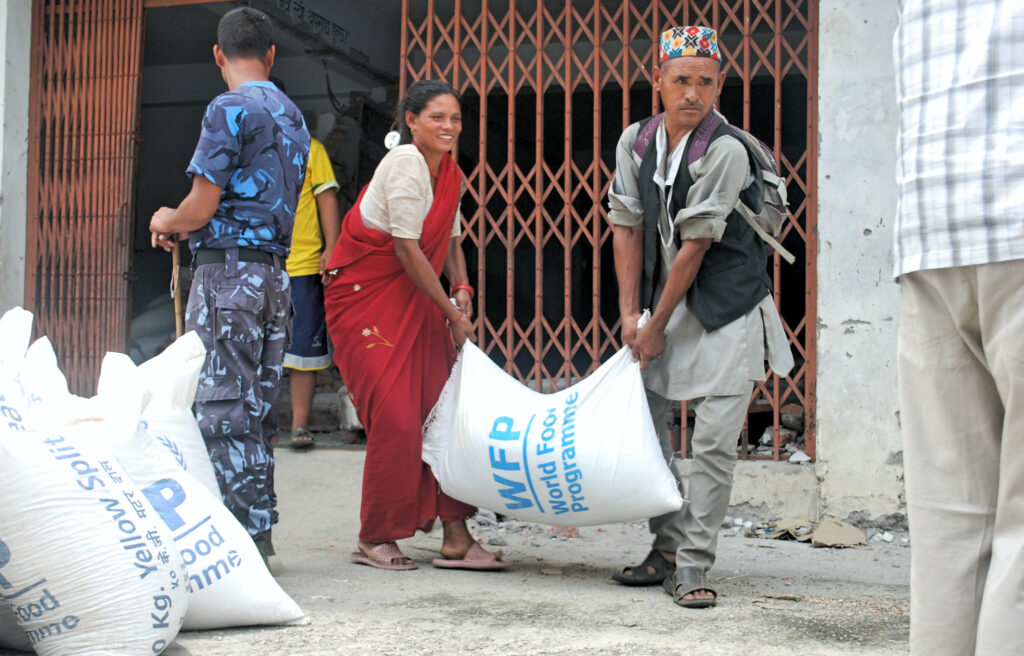
Spending vacation time in a disaster zone seems like a crazy idea, but so-called volunteer tourism can actually be a big help to communities trying to recover from natural disasters. It can also be a unique and rewarding experience for the volunteers.
Such volunteer tourism should not be confused with “disaster tourism”, the unfortunate practice of rushing to the scene of a calamity to gawk. That is certainly no help to anyone.
When disaster strikes a destination usually frequented by tourists, people naturally tend to stay away, leaving communities to deal with the loss of tourism income on top of the costs of repair and recovery.
A study by UTS, a technology university in Sydney, Australia, looked at the effects of volunteer tourism in the wake of the April 2015 earthquake in Nepal. They found that when it is done in an ethical matter than takes into account local conditions and the affected community, volunteer tourism can aid recovery and resilience.
In the months following the earthquake, most relief organizations asked international volunteers not to come unless they had specific expertise, such as medical skills, building skills, or emergency response experience. Eventually, Nepal relaxed conditions to include volunteers to help rebuild homes and schools, to intern in hospitals, and to support NGOs and to re-establish sustainable agriculture.
According to the Nepal Association of Tour and Travel Agents, almost one third of the tours booked to Nepal in the two years after the earthquake comprised groups who combined tourism with volunteering or philanthropy.
Volunteer tourism isn’t for everyone and for every situation, but for places that rely on tourism for their economy, building volunteer tourism into the recovery process can be a good strategy.
**********
Web Links
Volunteer tourism can aid disaster recovery
Photo, posted July 2, 2015, courtesy of the World Humanitarian Summit via Flickr.
Earth Wise is a production of WAMC Northeast Public Radio.
Take a vacation and combine it with some volunteer time and you become a voluntourist. According to NPR (2014) there are 1.6 million active voluntourists in the U.S. spending $2 billion annually (Wilson Quarterly 2015). These projects range from a day helping to restore coral in the South Pacific, volunteering for an eye mission to Nepal, building a school in Senegal, or helping pack apples at a food kitchen in Las Vegas.
Yet in addition to the joys of lending a hand wherever you go, are the challenges of doing it ethically and safely. In some cases, particularly in Nepal, those orphans in Kathmandu actually have parents back in the rural hillside villages. Threats to personal safety exist in the food voluntourists eat, the water they drink, the dogs they encounter, and in the public transportation they ride as passengers.
Clearly, one doesn’t need to be wealthy to travel to foreign lands to volunteer; you may not even have to go to foreign lands as opportunities may exist within your own state. Boulder, Colorado, resident Jeff Blumenfeld’s new book, Travel With Purpose, shows travelers how to identify the right location and volunteer opportunity, how to go about planning trips and preparing for volunteering, how to reach out, how to help. Through vivid examples and first hand stories from both recipients of volunteer work and the volunteers themselves, Travel with Purpose may make you rethink your next vacation.
http://www.Travelwithpurposebook.com
Can we set up a phone conversation?
Jeff Blumenfeld, author
Travel With Purpose – A Field Guide to Voluntourism (Rowman & Littlefield)
290 Laramie Blvd.
Boulder, Colorado 80304
203 326 1200 c
[email protected]
@purpose_book • travelwithpurposebook.com • Buy it here: tinyurl.com/voluntourismbook